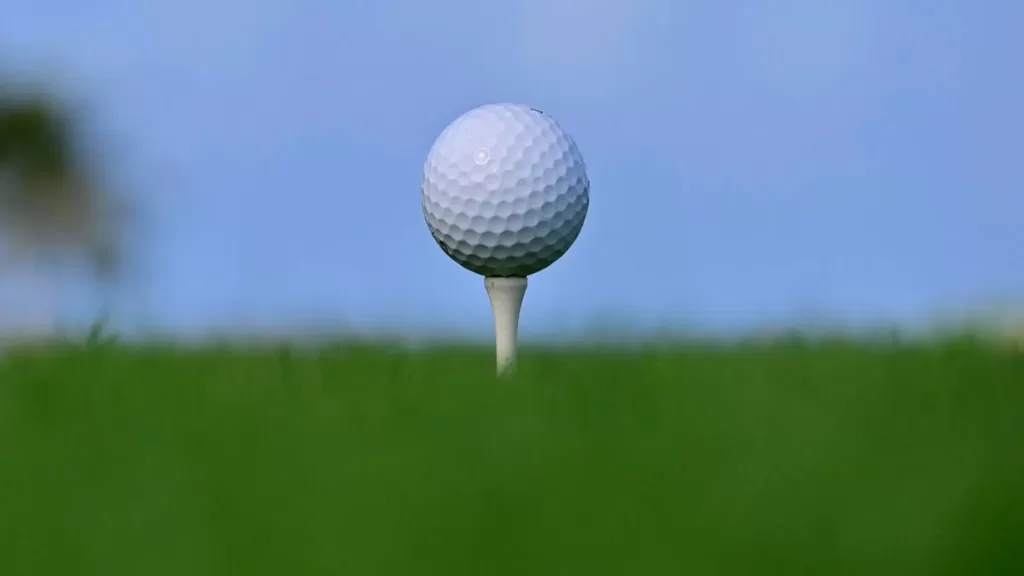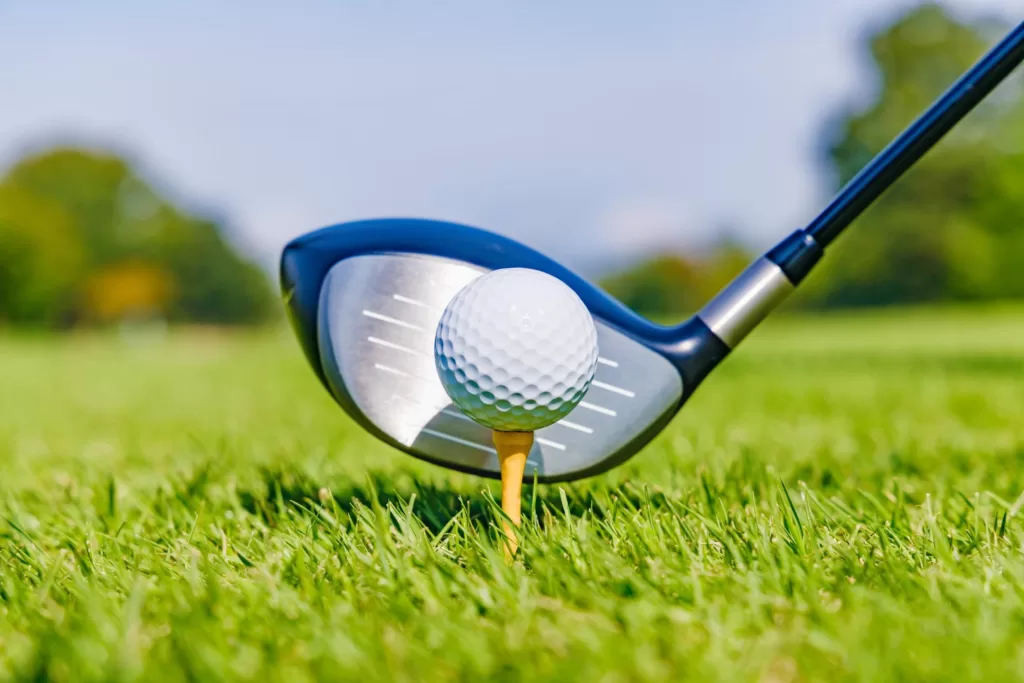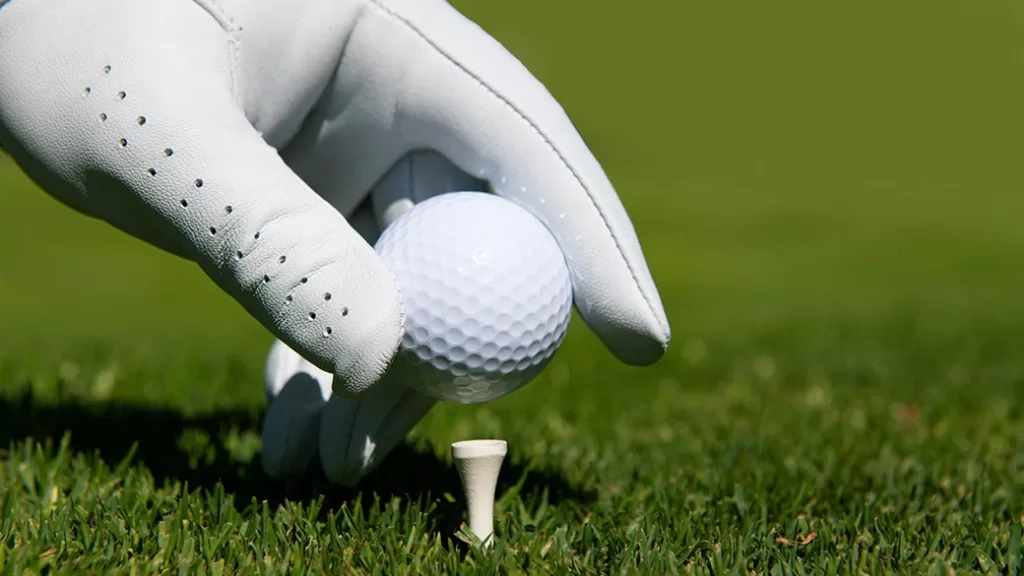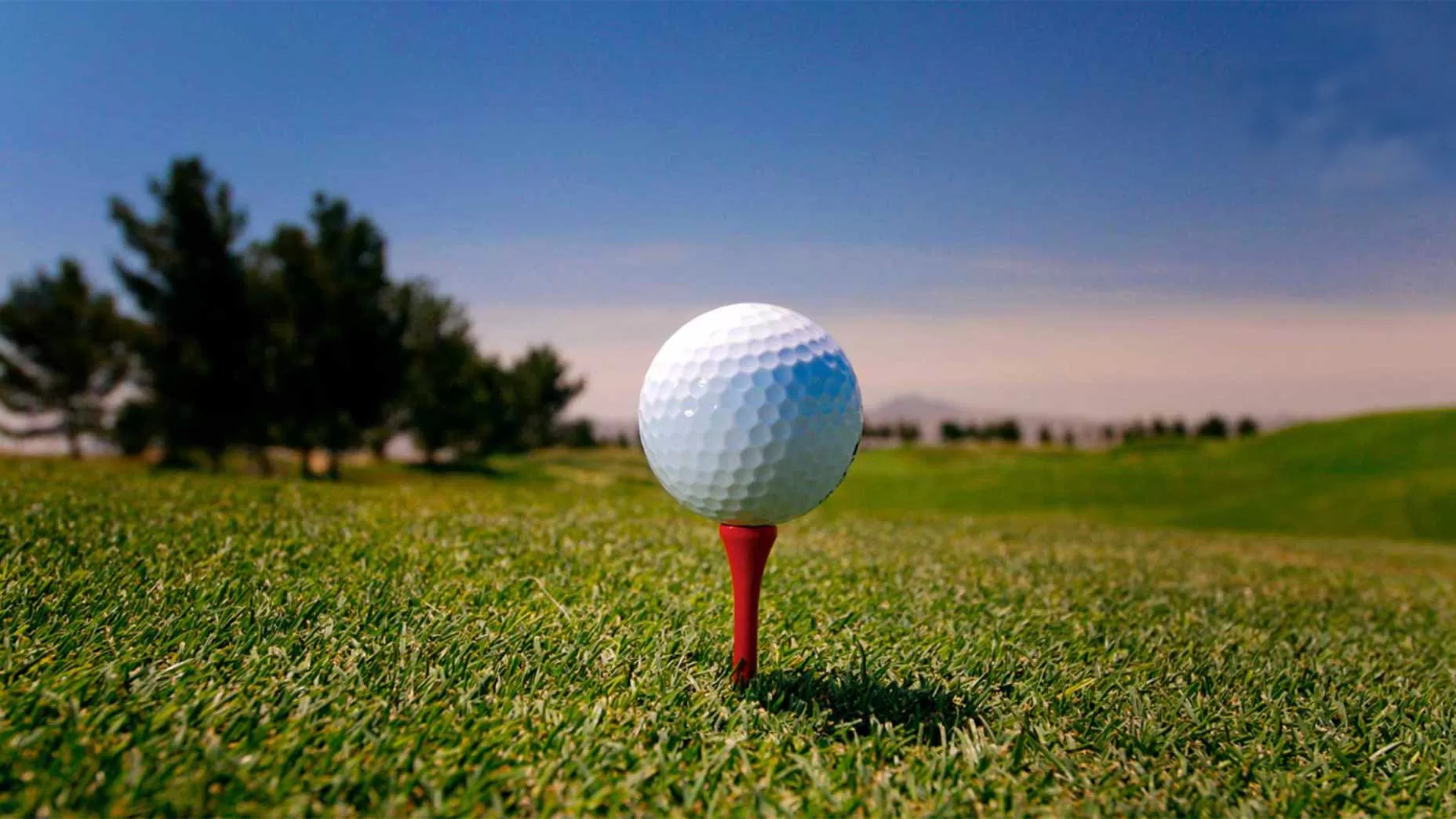الجولف هي رياضة عالية الجودة تتطلب معدات عالية الجودة لضمان الإنصاف ودقة اللعب. في لعبة الجولف ، تعتبر كرات الجولف واحدة من أهم القطع من المعدات. ومع ذلك ، فإن الأنواع والمواد المختلفة من كرات الجولف لها خصائصها ومزاياها. في هذه المقالة ، سوف نركز على أداء كرات الجولف البولي يوريثان في الملعب.

ما هي مواد كرات الجولف؟
تشمل المواد الرئيسية المستخدمة لكرات الجولف ما يلي:
- المطاط الصلب: هذه واحدة من أولى المواد في تاريخ كرات الجولف. تهيمن الكرات المصنوعة من المطاط الصلب على معظم السوق لفترة طويلة لأنها كانت رخيصة وسهلة الإنتاج. ومع ذلك ، فإن المرونة المنخفضة لكرات المطاط الصلبة جعلتهم غير قادرين على تلبية احتياجات تطوير الغولف الحديثة.
- الخشب: كانت كرات الجولف المصنوعة من الخشب تستخدم على نطاق واسع في أوائل القرن التاسع عشر وكانت أكثر قابلية للمناورة في الممر لأنها كانت أخف وزنا وأسهل السيطرة عليها. ومع ذلك ، نظرًا لعملية الإنتاج الشاقة ، وانخفاض الإنتاجية ، وحقيقة أن الكرات الخشبية تتأثر أكثر بالرطوبة ، سرعان ما بدأ الناس في متابعة مواد صنع الكرات أكثر كفاءة.
- منصات حديدية: في أواخر القرن التاسع عشر وأوائل القرن العشرين ، أصبح استخدام منصات حديدية لإنتاج كرة الجولف اتجاهًا جديدًا. كانت هذه الكرات شائعة لدى اللاعبين بسبب مرونتها أفضل ومسافة طيران أطول. ومع ذلك ، هناك بعض أوجه القصور في مواد كرة الوسادة الحديدية ، مثل السهل للتلف وارتفاع تكلفة إنتاج الكرة.
- الألياف الزجاجية: في أوائل الخمسينيات من القرن الماضي ، بدأت كرات الجولف في استخدام الألياف الزجاجية كخيار جديد. كان صوت اللقطة أعلى صوتًا وسافرت الكرة لفترة أطول ، مما يسهل على اللاعبين التحكم في طريقه. ومع ذلك ، سرعان ما تم استبدال كرات الألياف الزجاجية بالكرات المصنوعة من مواد أخرى لأنها كانت أكثر تكلفة وأضرار بسهولة.
- البولي يوريثان: في الوقت الحاضر ، أصبحت كرات الجولف البولي يوريثان أكثر أنواع الكرة استخدامًا على نطاق واسع. يفضلهم لاعبو الغولف بسبب طول العمر والمتانة والمرونة وسهولة الإنتاج والتحكم.
متانة كرات الغولف البولي يوريثان
إن المتانة العالية لكرات الجولف البولي يوريثان هي نتيجة لمجموعة من العوامل مثل المواد والهيكل والتصميم وعملية التصنيع.
- المواد: مصنوعة من مادة البولي يوريثان ، التي لديها مزايا عالية القوة ، ومقاومة التآكل ، والمقاومة الكيميائية ، ومقاومة الأشعة فوق البنفسجية ، وبالتالي يمكن أن تحافظ كرة الغولف البولي يوريثان على شكلها وأدائها بعد الكثير من الطيران وتأثير الهبوط.
- الهيكل: السطح مغطى بطبقة خاصة مقاومة للارتداء تحمي سطح الكرة من الخدش والتآكل ، مما يمتد عمره. بالإضافة إلى ذلك ، فإن ضغط الهواء داخل الكرة وحجم الكرة سيؤثر أيضًا على أدائها وعمره.
- التصميم: بنية التصميم أفضل ، وسطح الكرة له نسيج جيد ، ومرونة جيدة ، ومقاومة التأثير. يتم حساب نمط القالب على سطحه عن طريق التصميم العلمي ، وبالتالي فإن مسار الطيران الخاص به أكثر استقرارًا ولا يسهل الانحراف عن الهدف.
- عملية التصنيع: يتم تصنيعها من خلال عملية تصنيع متقدمة مع التحكم الدقيق في معلمات العملية ، وجودة المنتجات المنتجة مستقرة ، والتي يمكن أن تضمن أدائها وحياتها.
مرونة كرات الغولف البولي يوريثان
تتمتع كرات الغولف البولي يوريثان مرونة جيدة لرحلة كرة أكثر استقرارًا وارتداء أقل في النادي.
عندما تتعرض كرة الغولف لقوة خارجية ، يمكن للكرة أن تتشوه نسبيًا ، وتخزين كمية معينة من الطاقة ، ثم إطلاق هذه الطاقة بقوة أكبر. بالنسبة لكرات الجولف البولي يوريثان ، يتم التعبير عن مرونتها بشكل أساسي في عملية الاهتزاز والتشوه والارتداد للكرة. عندما يتم إصابة كرة الجولف بالتأثير ، ستشوه المواد الموجودة على سطح الكرة بسبب الضغط من قبل القوى الخارجية. في هذه العملية ، يتم ضغط الهواء الموجود داخل الكرة ويزداد ضغط الغاز مع الانحناء لسطح الكرة ، وزيادة الضغط يدفع الكرة للعودة إلى حالتها الأصلية بعد جزء التشوه. ستستمر عملية الضغط والارتداد هذه حيث يتم نقل المجال وتهتزه القوى الخارجية.
تُظهر مرونة كرة الغولف البولي يوريثان من خلال قدرتها على تخزين وإطلاق كميات كبيرة من الطاقة أثناء ثنيها وتهتز ، مما يسمح لها بالسفر مسافات كبيرة عبر الهواء. في الوقت نفسه ، تتيح مرونة كرات الغولف البولي يوريثان أيضًا أن ترتد هذه الكرات وتراجعها وأسفل الممر لمزيد من المسافة والدقة. لذلك ، فإن الخصائص المرنة لكرات الغولف يوريتان هي واحدة من أهم العوامل التي تؤثر على المسافة واستقرار رحلة الكرة.
استقرار الرحلة من كرات الغولف البولي يوريثان
يتم تحديد استقرار الرحلة الممتاز لكرات الغولف البولي يوريثان بشكل رئيسي من خلال تصميمها وخصائصها الفيزيائية.
- أولاً ، عادةً ما يكون سطح كرات الغولف البولي يوريثان ناعمًا ومصممًا مع أنماط هندسية. يساعد هذا التصميم على تقليل مقاومة الهواء عندما تطير الكرة ، وبالتالي زيادة المسافة وسرعة الكرة. بالإضافة إلى ذلك ، يساعد التصميم السطحي للكرة اللاعب على حساب اتجاه وزاوية الكرة ، وذلك لفهم مسار رحلة الكرة بشكل أفضل.
- ثانياً ، يمكن أن يؤثر مركز مركز الجاذبية وتصميم توزيع الكتلة لكرة غولف البولي يوريثان أيضًا على مسار رحلة الكرة واستقرارها. عادة ما يتم وضع أوزان الوزن على السطح وداخل الكرة لضمان توازن واستقرار الكرة وتقليل التقلبات الصاعدة والهبوط في رحلة الكرة. من المهم أيضًا الانتباه إلى الخصائص الديناميكية الهوائية للكرة عند تصميم الكرة ، بما في ذلك عوامل مثل انحناء الكرة وعدد وموقع المناطق المرتفعة من سطح الكرة. يمكن أن تتحكم هذه العوامل في الدوران وانحناء الكرة أثناء رحلة الكرة ، مما يؤثر بدوره على استقرار رحلة الكرة.
- أخيرًا ، فإن الخواص المادية لكرات الجولف البولي يوريثان ، وخاصة مرونة المادة ومتانة المادة ، لها تأثير على استقرار رحلة الكرة. عادة ما تكون الطبقة الخارجية من كرات الغولف البولي يوريثان مصنوعة من مواد مرنة ومرنة للغاية ، وتسمح هذه الخصائص للكرة بتخزين وإطلاق المزيد من الطاقة أثناء القوة والتشوه ، وبالتالي الحفاظ على استقرار مسار رحلة الكرة. بالإضافة إلى ذلك ، تعزز هذه المواد متانة الكرة ، مما يمنع الأضرار التي لحقت الكرة بمرور الوقت والتي قد تؤثر على استقرار الطيران.
يمكن أن تؤثر التصميم والخصائص الفيزيائية لكرات الجولف البولي يوريثان ، وكذلك خصائص المواد ، على استقرار رحلة الكرة. هذا الاستقرار يجعل من السهل على اللاعب متابعة المسار والهبوط في الكرة ، وبالتالي تحسين دقة اللعبة.

انخفاض معدل الدوران من كرات الغولف البولي يوريثان
تدور كرات الجولف أثناء الطيران بسبب قوة الأرجوحة والاحتكاك على وجه الكرة. كلما ارتفع معدل الدوران للكرة ، زاد انحراف الكرة في الرحلة في الرحلة ، مما يجعل من الصعب التحكم في المكان الذي ستحصل عليه الكرة.
مادة يوريتان أكثر صلابة ولها مرونة أعلى من كرات الجولف العادية. نتيجة لذلك ، تخضع كرة يوريتان لتشوه أقل تحت قوة التأرجح وتكون قادرة على الحفاظ على شكل واتجاه أفضل بمعدل تدور منخفض نسبيًا. هذا معدل الدوران المنخفض يقلل من الدوران الجانبي للكرة في الرحلة ، مما يؤدي إلى كرة أكثر استقرارًا. أيضا ، فإن تصميم وملمس سطح كرة الجولف يوريتان يساعد على تقليل الدوران الجانبي وزيادة استقرار الكرة.
في الختام ، فإن الصلابة العالية والمرونة والملمس السطحي لكرات غولف البولي يوريثان تؤدي إلى انخفاض معدل الدوران نسبيا في الطيران وانحراف الجانبي المنخفض ، مما يؤدي إلى كرة أكثر استقرارًا ويمكن التحكم فيها.
السرعة الأولية العالية لكرات الغولف البولي يوريثان
تتميز كرات الغولف البولي يوريثان بسرعة أولية أعلى مقارنة بكرات الجولف المصنوعة من مواد أخرى بسبب صلابة وكثافة ومرونة مادة البولي يوريثان.
- أولاً ، تكون مادة البولي يوريثان قاسية نسبيًا ، مما يسمح للكرة بالحمل بشكل أفضل تحت قوة الأرجوحة. تحتوي كرة البولي يوريثان أيضًا على سطح أكثر سلاسة ، مما يقلل من الاحتكاك الطفيف ويسمح للكرة بالاحتفاظ بمزيد من الطاقة أثناء مغادرته النادي ، مما يزيد السرعة الأولية.
- ثانياً ، تتمتع مادة البولي يوريثان بكثافة أعلى ومرونة أفضل ، مما يمنح الكرة شكلًا أكثر استقرارًا والقدرة على تحويل الطاقة في التأرجح إلى طاقة أكثر حركية ، مما يزيد من سرعة الكرة والمسافة المذهلة. تحتوي كرات الجولف البولي يوريثان أيضًا على ترتد أعلى (تسمى “معدل الارتداد”) ، مما يعني أن الكرة ترتد بسرعة أكبر بعد ضربها ، ونقل المزيد من الطاقة إلى حركة الكرة وتسبب في سرعة أولية أعلى.
في الختام ، تتمتع كرات الغولف اليوريتان بسرعة أولية أعلى من كرات الجولف المصنوعة من مواد أخرى بسبب خصائصها الممتازة من الصلابة والكثافة والمرونة. تتيح هذه السرعة الأولية المرتفعة للكرة السفر بشكل أسرع ويمكن أن تزيد من المسافة التي تنتقلها الكرة ، مما يؤدي إلى أداء أفضل لاعب كرة في لاعب الجولف.
معدل ضغط منخفض من كرات الغولف البولي يوريثان
يرجع معدل الضغط المنخفض لكرات الجولف البولي يوريثان مقارنةً بكرات الجولف المصنوعة من مواد أخرى إلى خصائص مادة البولي يوريثان نفسها.
- بادئ ذي بدء ، تكون مادة البولي يوريثان قاسية نسبيًا ، مما يعني أن الكرة تتطلب المزيد من الضغط لضغط وتشوه. لذلك ، تحت قوة التأرجح ، يمكن للكرة الحفاظ على شكل واتجاه أفضل عند ضربه دون تشويه الكرة بسبب التشوه الطفيف في الكرة أثناء التأرجح ، مما يؤدي إلى مسار كرة أكثر استقرارًا وتحسين دقة اللقطة.
- ثانياً ، تتيح المرونة الأفضل لمادة البولي يوريثان للكرة أن ترتد بشكل أسرع بعد ضربها ، مما يقلل من تشوه الكرة. هذا يسمح للكرة بالحفاظ على استقرار أفضل ، والحفاظ على شكل واتجاه الكرة ، وزيادة التحكم في الكرة ، مما يتيح لاعب الجولف ضرب الكرة بشكل أكثر دقة.
- أخيرًا ، تتمتع كرات الجولف البولي يوريثان بسماكة أكثر اتساقًا لطبقة الضغط الداخلية مقارنةً بكرات الجولف المصنوعة من مواد أخرى ، مما يمنح الكرة مركزًا للجاذبية أكثر استقرارًا. يتيح ذلك للكرة أن تدور بشكل أكثر ثباتًا بعد ضربها ، وبالتالي زيادة التحكم في الكرة والسماح للكرة بالطيران بدقة أكبر إلى الهدف.
باختصار ، تتمتع كرات الجولف البولي يوريثان بمعدل ضغط أقل مقارنةً بكتاب الجولف المصنوع من مواد أخرى ، مما يسمح بالضرب بالكرة بشكل أكثر اتساقًا ، وبالتالي تحسين دقة الكرة.
مقاومة الماء لكرات الغولف البولي يوريثان
فيما يلي الأسباب التي تجعل كرات الغولف البولي يوريثان قادرة على توفير مقاومة ممتازة للماء:
- المواد المقاومة للماء: البولي يوريثان عبارة عن مادة بوليمر مقاومة للماء مع أداء جيد مقاوم للماء. لذلك ، يمكن أن تمنع كرات الجولف البولي يوريثان بشكل فعال تسلل الماء ، وتجنب المواد الموجودة داخل الكرة من التورم بالماء وفقدان مرونتها الأصلية ، والحفاظ على المرونة والاستقرار.
- المرونة العالية: تتمتع كرات الجولف البولي يوريثان مرونة جيدة جدًا ، لذلك حتى لو كان هناك بعض التشوهات الطفيفة في الكرة ، فسيعود بسرعة إلى شكلها الأصلي في لحظة. هذه المرونة العالية تجعل الكرة لديها أيضًا مقاومة معينة لهجوم الرطوبة لأن سطح كرة الغولف البولي يوريثان يمكن أن يشكل طبقة فيلم لتجنب تغلغل الرطوبة من الخارج إلى داخل الكرة.
- مقاومة التآكل: في بيئة رطبة ، يتم تآكل العديد من المواد بسهولة وتأكسد ، مما يقلل من جودة الكرة وخدمة الكرة. والبولي يوريثين لديه مقاومة ممتازة للتآكل ، والتي يمكن أن تقاوم بشكل فعال التآكل والأكسدة في جو رطب ، لذلك لا يمكن تغيير كرات الجولف البولي يوريثان ، ويمكن أن تحافظ على مرونة جيدة ، وتعزيز متانة الكرة.
باختصار ، تتيح خصائص كرات الغولف المادية للبولي يوريثان من الحصول على مقاومة ممتازة لاختراق الرطوبة ومقاومة التآكل. تضمن هذه الخصائص أن كرات الجولف اليوريتان يمكن أن تظل مستقرة ودائمة في البيئات الرطبة ، وبالتالي ضمان دقة وموثوقية الكرة أثناء اللعب.
إعادة استخدام كرات الجولف البولي يوريثان
الأسباب ، لماذا يمكن استخدام كرات الغولف البولي يوريثان عدة مرات مقارنة مع كرات الجولف المصنوعة من مواد أخرى ، قد تشمل ما يلي:
- يوريتان أقوى وأكثر مقاومة للتآكل من كرات الجولف التقليدية التي تستخدم مواد مثل المطاط الصلب أو الأكسيد الأحمر. هذا يعني أن كرات الغولف البولي يوريثان يمكن أن تقاوم المزيد من القصف والاحتكاك ، وبالتالي من غير المرجح أن تتلف أثناء الاستخدام.
- نظرًا لأن مادة يوريتان لها مرونة جيدة ، يمكن أن تمتص قوة التأثير بشكل أفضل والعودة بسرعة إلى شكلها الأصلي. يمكن أن تحمي هذه المرونة قشرة كرة الجولف من كسرها أو تشوهها ، وتحسين عمر خدمة كرة الجولف.
- بالمقارنة مع مواد كرة الجولف الأخرى ، فإن يوريتان لديها مقاومة أفضل للمياه وأشعة الشمس. هذا يعني أنه حتى لو تعرضت كرة الغولف البولي يوريثان لأشعة الشمس والرطوبة القوية لفترة طويلة ، فلن تلترق وتشوه ، وبالتالي زيادة عمر خدمتها.
من الجوانب المذكورة أعلاه ، تكون كرات الغولف البولي يوريثان أكثر متانة ويمكن استخدامها عدة مرات مقارنةً بكتاب غولف المواد الأخرى. هذا يعني أنه يمكن للاعبين استخدام نفس كرات الغولف يوريتان لفترة أطول من الوقت ، وبالتالي تقليل تكلفة اللاعب.

خاتمة
تركز هذه المقالة على المتانة والمرونة واستقرار كرات الغولف البولي يوريثان. نحن الشركة المصنعة المحترفة لكرات PU ، بالجملة وتخصيص جميع أنواع كرات PU ، يمكن لأي شخص مهتم الاتصال بنا في أي وقت.

